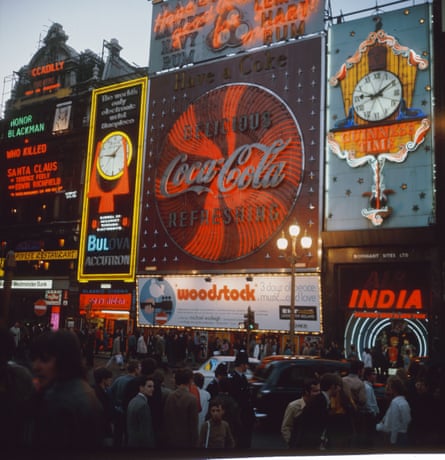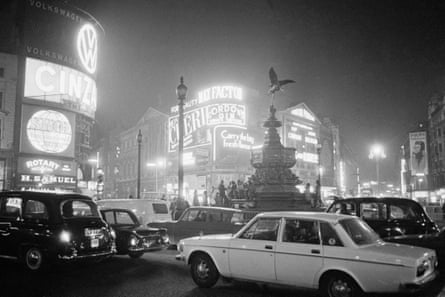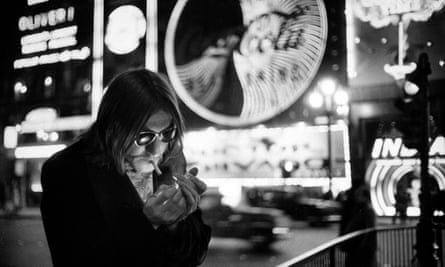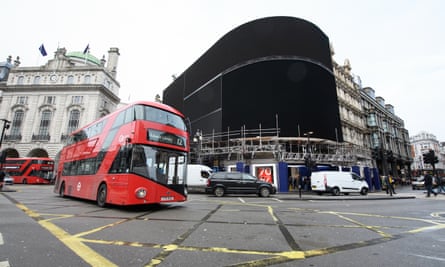The young Alfred Hitchcock was so obsessed with the bright lights of London’s Piccadilly Circus that he gave them a starring role in no fewer than five of his films. In his eyes, the illuminated hoardings first introduced in 1908 to the West End’s great popular intersection symbolised everything glamorous and exciting about London – especially sex and death.
In his 1927 silent thriller The Lodger, a crowd swarms to Piccadilly Circus to read a glowing electric news bulletin on the latest slaying by a Jack the Ripper-like serial killer. In The 39 Steps (1935), fugitive Robert Donat, after fleeing through the Scottish Highlands handcuffed to Madeleine Carroll, finally makes it back to the bright lights, and we see a verité sequence of Piccadilly Circus, its signs glowing against the dark. “BLACK and WHITE”, reads a huge whisky ad.

Now those lights have gone out, and they will not be lit again in our lifetimes – if Trump manages to blow up the world before a giant new hi-res digital board is switched on in the autumn. Assuming everything goes OK, this is still the longest break in Piccadilly’s commercial illuminations since they were turned off during the second world war. Looking at images of a century of London’s most visible pop art, it is easy to see why Hitchcock saw this glowing urban hub as a place of romance and danger, excitement and sleaze.

Even before it got the lights, Piccadilly Circus was symbolically marked as a place of sex and the night by Alfred Gilbert’s statue, popularly known as Eros. This Greek love god was put up in the 1890s to commemorate Lord Shaftesbury, but is more suggestive of Saturday-night dates than Victorian social reform. The electric signs gave Piccadilly a feeling of the future and a whiff of being the centre of the world at a time when motor traffic was still sparse and horses and carriages could be silhouetted against the lights.

Because these adverts were constructed as painted letters or images covered in lightbulbs, they could be read even when the lights were switched off. Some of the most moving images of Piccadilly Circus show people celebrating there in 1945, its signage still vivid in spite of austerity. This wide space with its ads and shows became the true heart of 20th-century London because its images of pleasure and fun, as opposed to authority, made it a people’s square, a democratic territory – as the 1945 celebrations make plain.

Glowing, raw full-colour 1960s images bring us into today’s Piccadilly Circus, a place busier than ever with bigger hoardings than ever, which is not so much the centre of London as a self-conscious symbol of being here. Tourists perch around Eros, show-goers and hen parties mill underneath the flashing colours of the city at night.

We wouldn’t want it any other way. Close enough to Soho to feel disreputable, raucous enough to feel dangerous, Piccadilly Circus will never suffer the fate of New York’s Times Square, and get cleaned up for midwestern visitors. It is impure and corrupting, the luminous heart of London.
